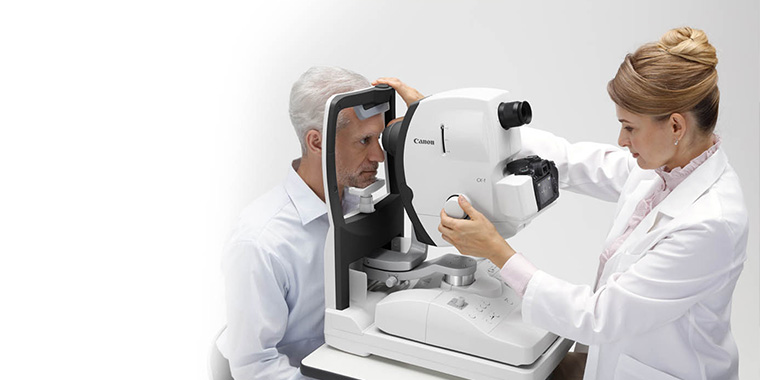The Benefits And Drawbacks of Different Refractive Surgical Treatments for Improved Eyecare

LASIK Surgery
LASIK surgical procedure is a generally carried out refractive procedure that aims to remedy vision issues such as farsightedness, astigmatism, and nearsightedness. This surgical method has acquired popularity due to its efficiency in supplying patients with clearer vision and decreasing their dependency on glasses or contact lenses. During the procedure, a slim flap is developed on the cornea, and a laser is utilized to improve the underlying cells, dealing with the refractive mistake. The flap is after that rearranged, permitting quick recovery and minimal pain for the individual.
Among the key benefits of LASIK surgical procedure is the fast enhancement in vision experienced by numerous patients. A lot of people discover a considerable improvement in their sight quickly after the treatment, with very little downtime required for recovery. In addition, LASIK is known for its high success rate and low occurrence of difficulties when performed by experienced doctors. Like any type of medical procedure, LASIK additionally brings some threats, including completely dry eyes, glow, halos, and under or overcorrection of vision. It is vital for people thinking about LASIK surgery to undergo an extensive examination by an eye care specialist to figure out if they appropriate candidates for the treatment.
PRK Treatment
The PRK treatment, likewise referred to as Photorefractive Keratectomy, is a type of refractive surgical treatment that intends to remedy vision problems comparable to LASIK surgical procedure. Unlike LASIK, which includes producing a flap in the cornea, PRK services the surface layer of the cornea. Throughout the PRK treatment, the outer layer of the cornea, called the epithelium, is removed to enable improving of the underlying corneal tissue with an excimer laser. This improving assists to deal with refractive errors such as astigmatism, nearsightedness, and farsightedness.
One of the advantages of PRK over LASIK is that it removes the danger of flap-related issues given that no flap is created throughout the surgical procedure. Despite the longer healing duration, PRK can be a suitable option for people looking for vision adjustment surgery.
SMILE Surgery
A sophisticated refractive surgery method obtaining appeal in the area of ophthalmology is SMILE Surgical treatment. Little Laceration Lenticule Removal (SMILE) is a minimally intrusive procedure that corrects vision by reshaping the cornea utilizing a femtosecond laser. Unlike standard LASIK surgical treatment, SMILE Surgical treatment entails producing a little incision in the cornea to remove a lenticule, which causes much less interruption to the corneal structure and possibly quicker recuperation times.
One of the primary benefits of SMILE Surgical procedure is its ability to treat nearsightedness (nearsightedness) and astigmatism with high accuracy, leading to excellent aesthetic end results for patients. The minimally intrusive nature of the procedure also reduces the danger of difficulties such as completely dry eye disorder, making it a favorable alternative for individuals looking for refractive surgery.

LASEK Strategy
Having explored the benefits and factors to consider of SMILE Surgical treatment, one more significant refractive surgery method worth examining is the LASEK Strategy. LASEK, which stands for Laser-Assisted Subepithelial Keratectomy, is a type of laser eye surgical treatment that aims to fix refractive errors such as myopia (nearsightedness), hyperopia (farsightedness), and astigmatism.
Unlike LASIK, LASEK does not involve creating a corneal flap. Rather, throughout a LASEK procedure, the specialist utilizes a diluted alcohol service to loosen the slim external layer of the cornea, understood as the epithelium.
One of the main advantages of LASEK is that it can be ideal for individuals with thin corneas that may not be excellent prospects for LASIK. In addition, LASEK normally leads to marginal post-operative pain and a quicker healing time compared to PRK. The aesthetic recuperation process with LASEK may be somewhat longer than with LASIK.
Implantable Call Lenses
Implantable Contact Lenses supply a lasting vision adjustment remedy for individuals seeking an alternative to standard call lenses or glasses. These lenses, likewise called phakic intraocular lenses, are operatively placed right into the eye to remedy refractive mistakes such as myopia (nearsightedness), hyperopia (farsightedness), and astigmatism. cardiologist andalusia. Unlike typical call lenses that remain on the helpful resources surface of the eye, implantable call lenses work within the eye itself, giving clear vision without the demand for everyday maintenance or removal
Among the essential advantages of implantable get in touch with lenses is their permanence. When inserted, they can stay in the eye forever, using regular and steady vision improvement. In addition, these lenses can be a superb option for individuals who are not excellent prospects for laser eye surgery or that like a relatively easy to fix vision adjustment procedure.
However, implantable call lenses do lug some dangers, consisting of the capacity for cataracts or raised eye stress. It is vital for people considering this option to speak with an eye treatment professional to establish if implantable get in touch with lenses are the appropriate selection for their certain requirements and eye wellness.
Final Thought
To conclude, each kind of refractive surgical procedure has its very own benefits and downsides. LASIK surgery is preferred for its fast recovery time, while PRK treatment may appropriate for people with slim corneas. SMILE surgical treatment provides minimal discomfort during the treatment, however LASEK strategy might have a longer healing process. Implantable contact home lenses supply an option for those that are not appropriate candidates for conventional surgical treatments. Individuals should talk to their eye treatment carrier to determine the most effective choice for their specific demands.

Generally, SMILE Surgical procedure offers an appealing alternative for people looking to enhance their vision through refractive surgical treatment.